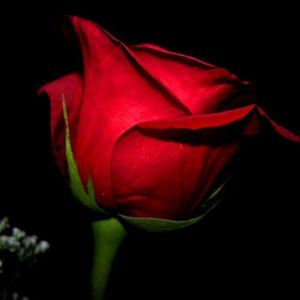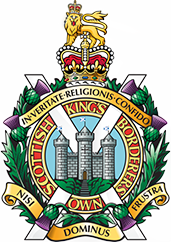THE MINDEN ROSE

Those six British Regiments of Foot were:
* 12th (The Suffolk Regiment),
* 20th (The Lancashire Fusiliers),
* 23rd (The Royal Welch Fusiliers),
* 25th (The King’s Own Scottish Borderers),
* 37th (The Royal Hampshire Regiment)
* 51st (The King’s Own Yorkshire Light Infantry).
It was a day of firsts. The first time British Infantry had aimed down the barrel of the “Brown Bess” musket; previously such accuracy had been deemed “unsporting.” The first time that British field guns were moved using horses to keep up supporting fire in the advance, thus giving birth to the concept of The Royal Horse Artillery; prior to this, heavy guns had been positioned on the battlefield and were left there for the duration – rightly or wrongly sited. But famously, it was where tradition holds that the British infantry plucked roses as they advanced and stuck them in their hats, so that they could distinguish between friend and foe in the confusion and smoke of battle.
Curiously, a horticultural study of the battlefield, which was a “blasted heath” at the time, suggests that it would have been impossible for the soil, where the main lines of infantry stood, to support the growing of even wild roses. A far more likely explanation is that it was the adhoc battalion of “light” companies (the recce soldiers of their day) grouped on the right flank of the mass of British infantry that advanced to attack the French infantry, who were trying to outflank them through the villages on the Southern edge of the heath. As the light companies advanced did they snatch garden roses from the villagers’ flower beds and put them in their hats as a recognition symbol? This is perhaps a fanciful idea too, but at least it gives legitimacy to the tradition of the Minden Rose that all six Regiments held in common. It also believed that locals in that area celebrated 1st August, the harvest festival – Lammas Day, by wearing white roses in their hats. Did the Hanoverian troops do it first and we copied them? If this was true, it still would not explain where the roses came from in the first place.
The picture left is one of a set of paintings of the 25th of Foot stationed in Minorca in 1769, just 10 years after the Battle of Minden. It appears that the officers and soldiers are wearing sprigs of laurel in their hats; this is replicated in the other paintings in the series. Are these laurels being worn in lieu of roses? The officers in the picture look singularly unamused. After all, the original battle started with a misunderstood order to advance “by beat of drum”, without which there would have been no immortal glory. Is it too fanciful to imagine a logistical cock up in Minorca between the Adjutant and Quartermaster with both assuming that the other one had placed the Battalion’s order with Interflora? Is this the first recording of an “unhappy” Minden Day celebration? The original painting is in the National Army Museum and a copy can be seen in the excellent Regimental Museum of the King’s Own Scottish Borderers in The Barracks, Berwick-upon Tweed.
“Always a Borderer”

